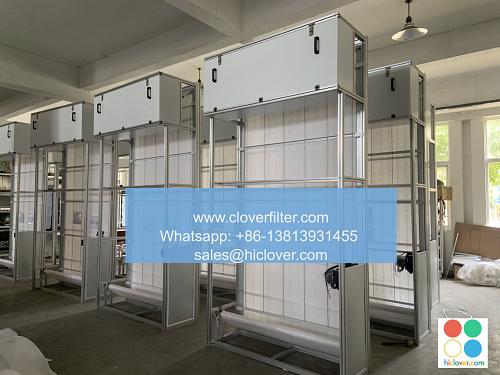The Role of Nanofibers in Air Filter Engineering

The Pivotal Role of Nanofibers in Air Filter Engineering
Introduction to Nanofibers
Air filters play a crucial role in ensuring the quality of air we breathe, whether in industrial settings, automotive applications, or household use. One key component in the development of advanced air filters is the incorporation of nanofibers. Synthetic and natural nanofibers have garnered significant attention in recent years due to their exceptional properties, making them an integral part of modern air filter engineering.
Properties of Nanofibers
Nanofibers possess several unique properties that make them highly beneficial for air filtration:
- High surface area-to-volume ratio: Nanofibers offer a significantly larger surface area compared to traditional fibers, allowing for more efficient particulate capture.
- Pore size and uniformity: Nanofibers can be engineered to have specific pore sizes, enabling tailored filtration efficiency for various applications.
- Electrostatic properties: Some nanofibers exhibit electrostatic charging capabilities, enhancing particle capture at the molecular level.
- Industrial Air Filtration: Nanofibers are used in industrial air cleanups to remove pollutants, particulate matter, and industrial odors.
- Automotive Air Purification: Nanofiber-based air filters are integrated into vehicle systems to improve cabin air quality by removing harmful emissions.
- Heating, Ventilation, and Air Conditioning (HVAC): Nanofibers optimize HVAC systems by enhancing filtration efficiency and airflow, leading to improved indoor air quality.
- Personal Protective Equipment (PPE): Nanofiber-based PPE garments and masks provide superior filtration and protection for workers in hazardous environments.
- Welding Fume and Metalworking Smoke: Nanofibers effectively capture metal fume and other particles, reducing exposure to toxic compounds.
- Scalability: Large-scale production of high-quality nanofibers is essential for widespread adoption.
- Standardization: Establishing uniform standards for nanofiber-based air filters is crucial for ensuring consistent performance and efficacy.
- Cost-effectiveness: As demand increases, manufacturers must balance the development of more affordable nanofiber-based filtration systems without compromising on quality.
Applications of Nanofibers in Air Filter Engineering
The versatility of nanofibers has led to their adoption in various air filter applications:
Challenges and Future Developments
While nanofibers have revolutionized air filter engineering, several challenges remain:
Conclusion
Nanofibers have revolutionized air filter engineering by providing enhanced filtration efficiency, improved lifespan, and versatility in various applications. As the demand for cleaner air continues to rise, the role of nanofibers in air filter engineering will only continue to expand, making a significant impact on our environment and public health.
I’d be happy to help! Please provide a prompt or topic you’d like to discuss, and I’ll do my best to assist you.


